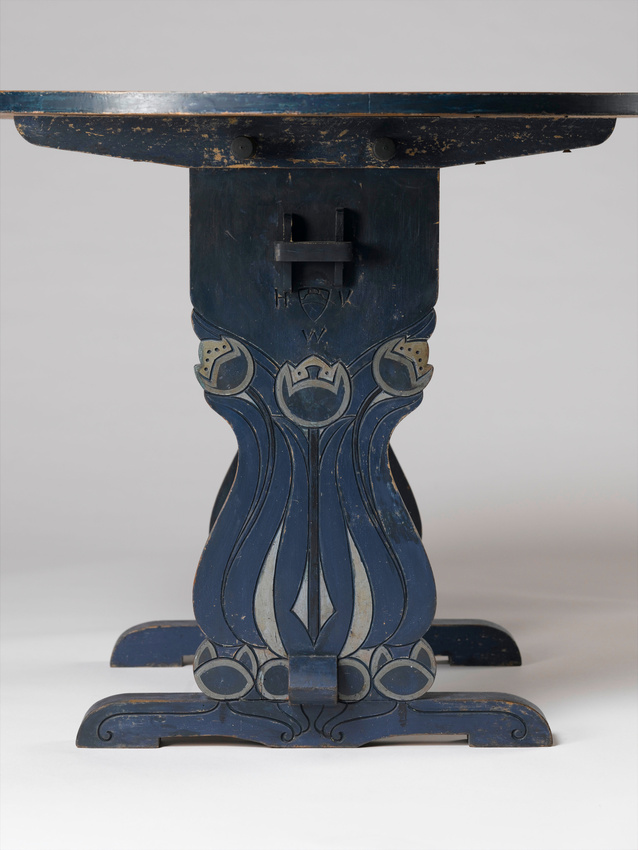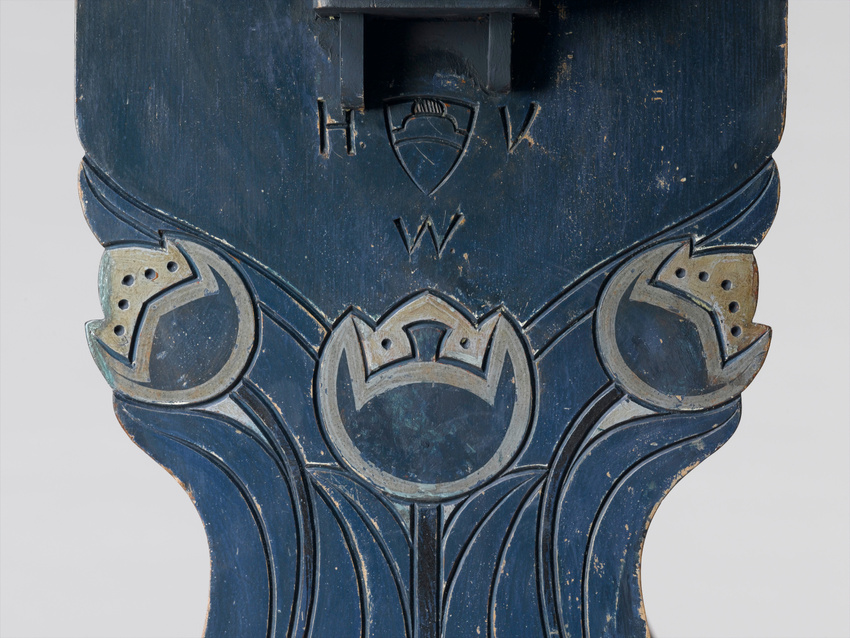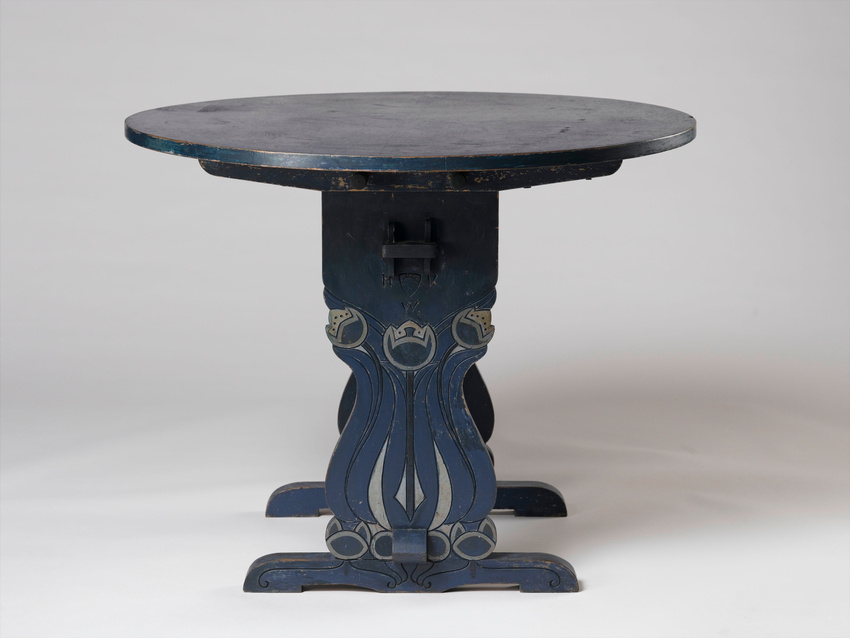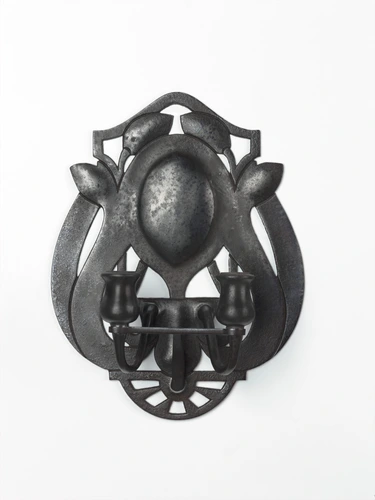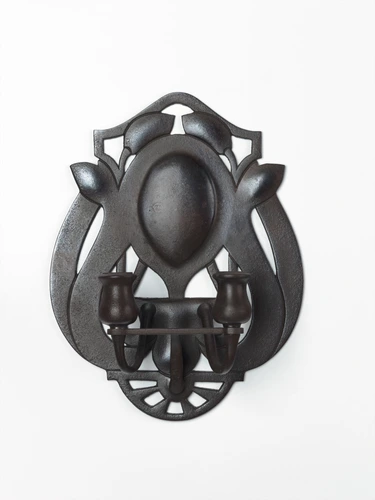Table de milieu
In 1895, the painter Heinrich Vogeler used an inheritance from his father to buy the Barkenhoff. This building in Worpswede-Ostendorf, a town in Lower Saxony (Germany), had housed an artists' colony for about ten years. Vogeler's interest in the decorative arts was certainly linked to the furnishing of the Barkenhoff. From then on, Vogeler quickly established his reputation as an interior designer.
This table can be dated to about 1900. The tulips decorating the feet are similar to the chair backs in a set of dining room furniture commissioned from the artist in 1899-1900. The curve of the tulip leaves is also found on the doors of a plan for a small wardrobe published in 1899.
But it is with the illustrations drawn by Vogeler in 1898-1901 that the tulips on this table have the most affinity. In particular, we find the bulb which mimics the shape of the flower and is joined to it by a stiff stalk and fleshy sinuous leaves.
As for the blue colour, it echoes the traditional blue or green timber of Worpswede's houses.


